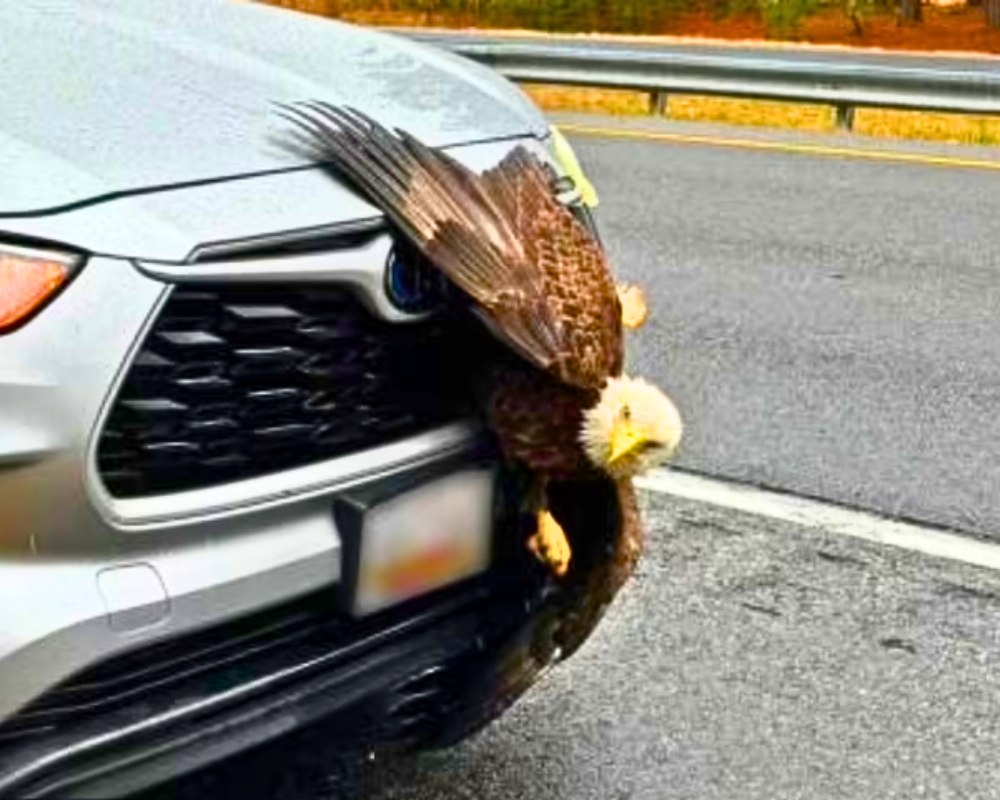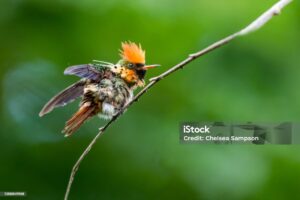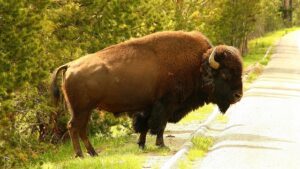Animals surprise us in the wild—but sometimes the most unforgettable wildlife stories unfold on busy highways. In Calvert County, Maryland, a bald eagle collided with a vehicle on Route 4 and became trapped in the car’s front grille. What could have ended in tragedy turned into a remarkable roadside rescue, thanks to a calm driver, quick-moving deputies, and a dedicated Animal Control officer. After a careful extraction and a health check, the national symbol of the United States returned to the sky—shaken, but safe.
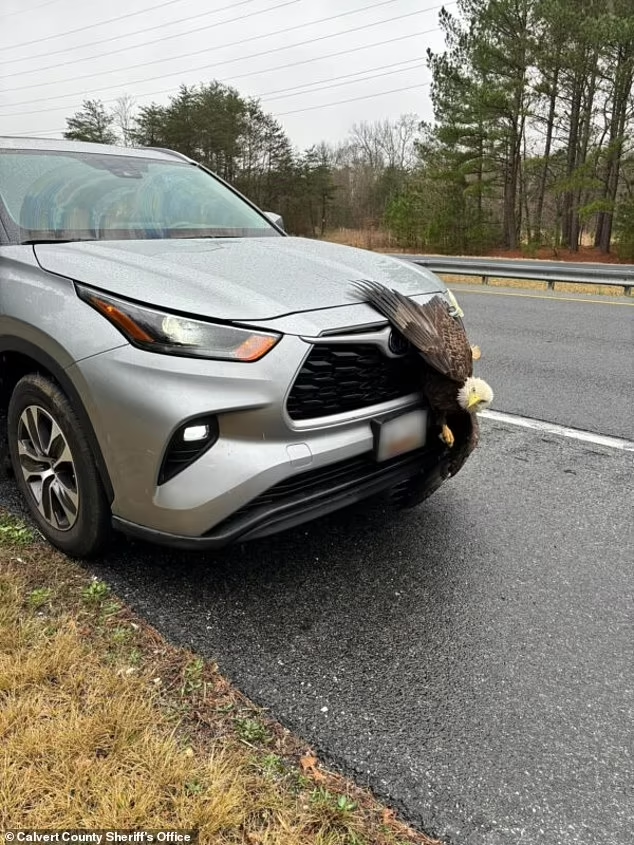
A Sudden Impact on Route 4
It happened fast. The driver felt the impact, pulled over, and discovered the impossible: a bald eagle, feathers wedged in the vehicle’s protective nose panel, still alive but unable to free itself. Instead of attempting a risky DIY rescue, the driver called for help—exactly the right move when an injured wild raptor is involved. Within minutes, Calvert County Sheriff’s Office deputies and Animal Control were on scene.
The first priority: keep the roadway safe and stress to the bird as low as possible. Sirens stayed off, voices stayed calm, and responders positioned vehicles to shield the scene from traffic. This matters with raptors; stress alone can complicate injuries.
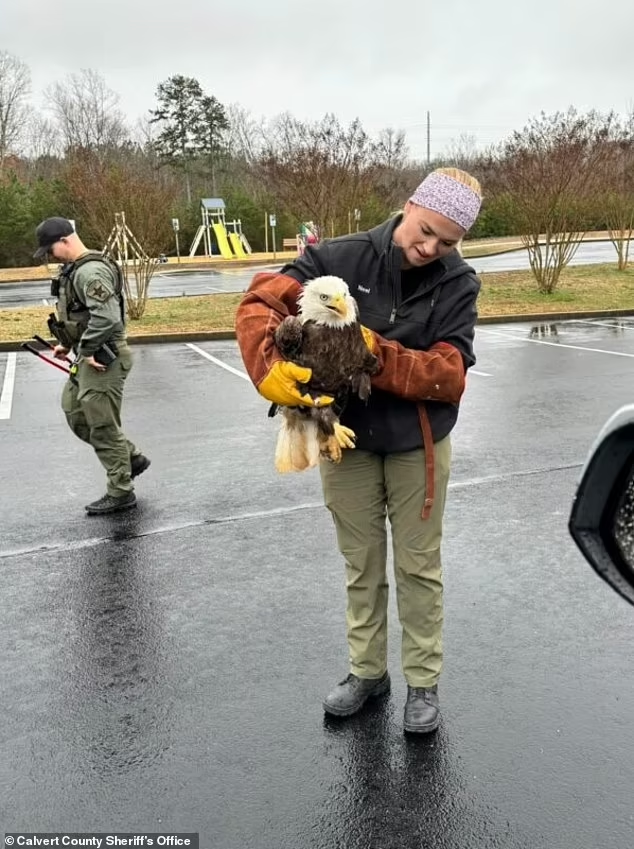
Trapped Feathers, Beating Heart
On arrival, Animal Control Officer (ACO) Hannah Neel assessed the eagle. The bird was alert, eyes bright, breathing steady—good signs. The feathers were entangled in the grille; careless tugging could snap primaries or injure the wing. Deputies steadied the bumper while Neel worked feather by feather, carefully freeing the bird without twisting the wing or stressing joints. After several deliberate minutes, the eagle was loose—cradled briefly in gloved hands for a quick field check.
Photos later showed ACO Neel holding the majestic raptor—broad wings, fierce gaze, unmistakable presence. For a moment, the nation’s symbol of freedom had become a roadside patient. Then came the best news of all: after a more thorough exam, the bird was declared “in good health.”
👉 More inspiring life stories: Full Story: Man Loses 360 Pounds Naturally — Internet Rallies to Support His Next Step
A Rare Highway Outcome: Rescue, Release, Relief
Wildlife collisions often end badly, especially for large birds that misjudge closing speeds or cross low over lanes. That’s why this outcome felt extraordinary. With the help of trained responders and a driver who did the right thing, the eagle avoided further injury. After assessment, it was released back into the wild, beating its wings into the open Maryland sky.
Local residents flooded social media with relief and thanks:
-
“So happy the eagle (and driver) were okay.”
-
“I saw the car on the shoulder—heartbreaking until I heard the outcome!”
-
“Thank you for saving our national bird!”
Gratitude also poured in for Animal Control: “Officer Neel…extremely responsive, caring, and diligent.” Moments like this highlight the quiet, everyday professionalism of animal services teams—work that spans everything from stray pets to once-in-a-lifetime raptor rescues.
Why Bald Eagles End Up Near Roads
Bald eagles (Haliaeetus leucocephalus) have rebounded spectacularly across much of North America, nesting near rivers, bays, and reservoirs—and, increasingly, near people. With more eagles come more roadside encounters. Common risk factors include:
-
Road-adjacent foraging: eagles scavenge roadkill or dropped fish near bridges and causeways.
-
Low crosswinds and glide paths: wind conditions can push birds low over highway lanes.
-
Distraction during squabbles: competition over food can cause split-second misjudgments.
This incident is a reminder that the recovery of an iconic species brings fresh responsibility. When animals return to human landscapes, we must adapt—through safer driving habits and faster reporting when accidents happen.
What To Do If You Hit or Find an Injured Raptor
If you’re ever in a similar situation, here’s a simple, safe checklist:
-
Pull over safely and turn on hazards. Do not stand in live lanes.
-
Do not attempt a bare-handed rescue. Raptors have razor talons and powerful beaks.
-
Call local authorities (sheriff/police). Ask for Animal Control or a licensed wildlife rehabilitator.
-
Limit noise and movement. Keep bystanders and pets away; reduce the bird’s stress.
-
Share exact location (route, mile marker, nearest exit) to speed response.
-
Do not feed or give water. Handling and improper care can cause further harm.
Quick, calm reporting saves lives—yours, other drivers’, and the animals’.
How Professionals Handle a Stuck Bird
Trained responders follow a careful sequence:
-
Scene safety: traffic control, minimal siren/noise.
-
Visual exam: posture, respiration, bleeding.
-
Controlled extraction: cutting plastic if needed, supporting wings and legs, avoiding feather and joint damage.
-
Containment: ventilated wildlife crate or raptor bag for transport.
-
Triage & release: if no fractures or neurological signs are present, and flight is strong, release may happen the same day.
That’s precisely why this Maryland eagle’s story ended with open wings instead of a clinic stay.
Why This Story Resonates
There’s symbolism, of course—the bald eagle as a national emblem—but this rescue touches something deeper. Roads are where modern life and wildlife stories collide, sometimes literally. It takes a village—drivers who stop, officers who care, animal pros who know what to do—to turn a bad moment into a good outcome.
It also reminds us that life is resilient. A few inches of plastic grille, a few minutes of patience, and a few steady hands made the difference between suffering and freedom.
Keeping Eagles (and Drivers) Safer
We can’t prevent every wildlife collision, but we can lower the odds and lessen harm:
-
Scan the shoulders—particularly near water. Slow slightly if you spot large birds or scavengers.
-
Avoid swerving hard for birds; brake firmly and keep your lane—sudden swerves cause pileups.
-
Report downed wildlife quickly; don’t assume someone else will.
-
Secure truck beds so fish or food scraps don’t attract raptors to roadway edges.
-
Support local rehab centers and wildlife groups; they rely on community donations and volunteers.
A Small Miracle on a Maryland Shoulder
The image of ACO Hannah Neel holding a calm, alert bald eagle speaks volumes: care, competence, and a rare chance to send a symbol of freedom back where it belongs. For a driver who did the right thing under stress, for deputies who managed a tricky scene, and for an Animal Control officer who turned skill into a happy ending—this was a win for everyone.
And for the eagle? A second takeoff, a hard-earned lesson in highway hazards, and the sky—wide open.
👉 Read next: The Hidden Meaning Behind Princess Diana’s Cannes Gown – A Heartfelt Farewell to Grace Kelly
